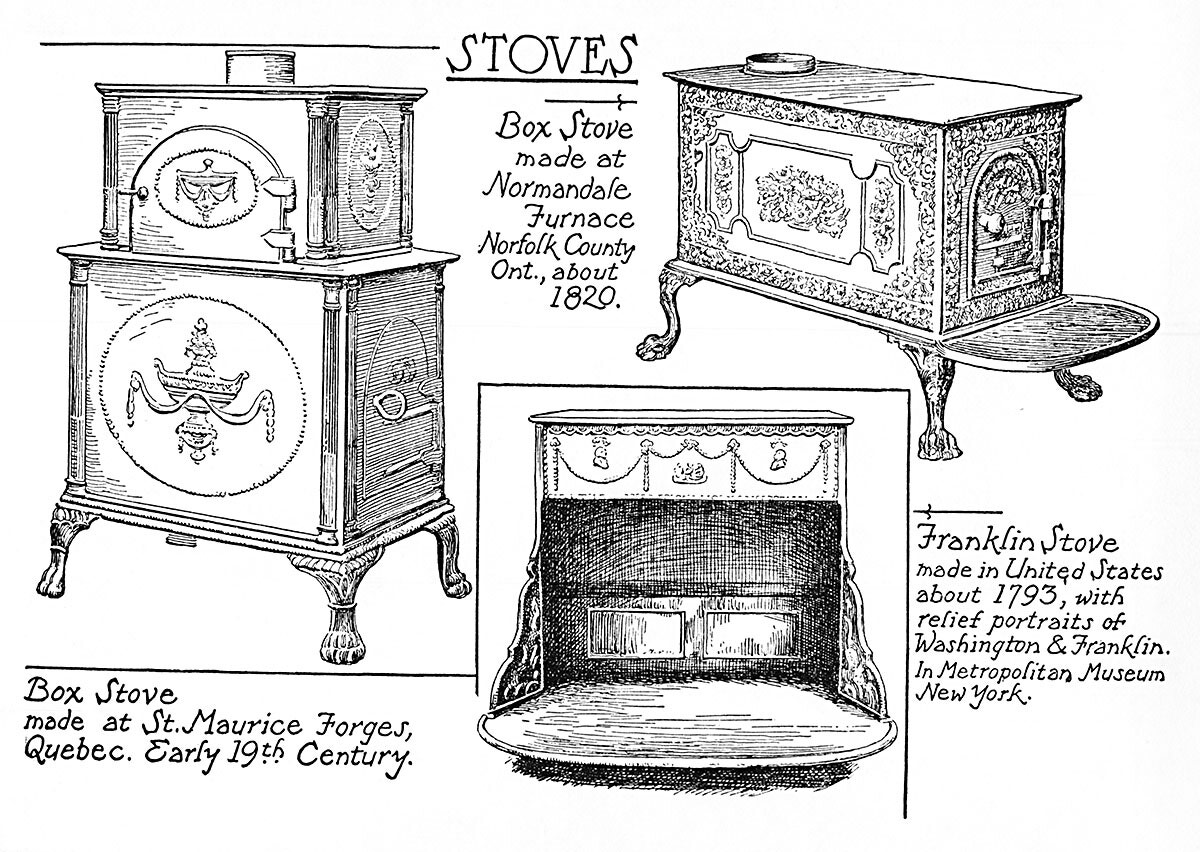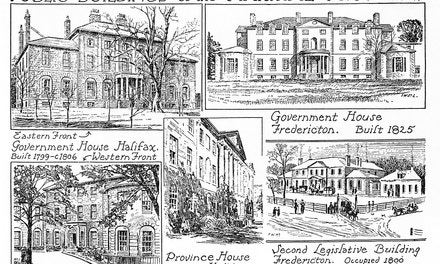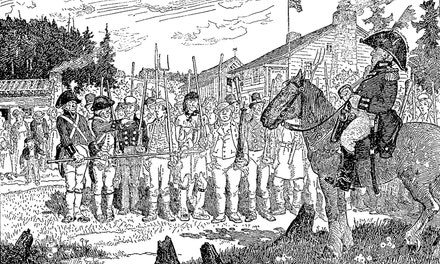Stoves
Library and Archives Canada, Acc. No. 1972-26-430
Remarks
C.W. Jefferys' notes about this picture from The Picture Gallery of Canadian History Volume 2
Stoves of some kind were in use in Canada much earlier than is commonly supposed. There is mention of them during the French period. Mrs. Simcoe, in her Diary, says that grates were tried for heating the "canvas house" in which they lived at Newark, but these not answering, stoves were substituted; she also mentions their use in Quebec, and complains of the overheating of the houses in winter.
At the St. Maurice Forges in Lower Canada, stoves were manufactured during the eighteenth century, their characteristic product, known as the Three River Stove, was the "two-decker" box stove, with fire box below and oven above. Stoves long enough to hold a cord-wood stick were sometimes used to heat two rooms by placing it midway of an opening cut in the dividing wall.
Benjamin Franklin invented an open stove for heating. In a pamphlet which he published in 1744 he describes his "newly invented Pennsylvania fire places, composed of five iron plates scru'd and fixed together, with one side open." While retaining its original basic construction, the "Franklin" stove was furnished with various fittings, such as brass railings, and was often decorated with castings of illustrations of Biblical stories.
The first iron foundry in Upper Canada was established about 1820 in Norfolk County by Joseph Van Norman and his partners, the ore being procured from extensive bogs in Charlotteville. The principal products of this Normandale Furnace were bar-iron for blacksmiths, axes, and stoves. The foundry carried on an extensive and profitable business for several years, but about 1852 it ceased to exist owing to financial losses, and the depletion of bog-ore in the immediate vicinity. In 1829 the foundry was placed under the management of Elijah Leonard, an experienced American iron-worker, who later founded the firm of E. Leonard and Sons, in London, Ont., and became a Dominion Senator. In a published autobiography of the family the furnace is described as consisting of a brick stack or chimney about thirty feet high built on the side of a hill. "Motive power was obtained from a stream which turned an overshot wheel about fourteen feet in diameter that drove a double piston bellows by means of cranks. Only one tuyere (pipe through which air is forced) was employed to admit the blast. The ore and charcoal were mixed in the top house, being dumped into the furnace by barrows, and the iron when melted ran down into a hearth about two feet wide and five feet long. Into this receptacle we dipped our ladles and carried off the product direct to the flasks. When in full blast we took off two heats in twenty-four hours." The site can still be seen, but no vestige of the buildings remains. The information about the Normandale Furnace is taken from Pioneer Sketches of the Long Point Settlement, by E. A. Owen.
Published References
- Jefferys, Charles W. (1945) The Picture Gallery of Canadian History Volume 2, p.115




Comments